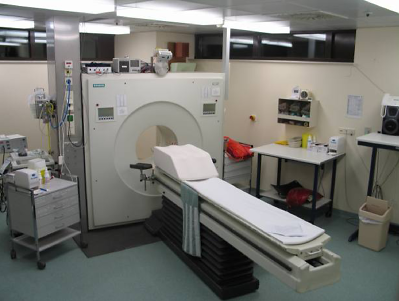Physicians will soon have a new tool to help them evaluate patients with cognitive decline who might have Alzheimer’s disease. The Food and Drug Administration (FDA) announced April 10 the approval of Amyvid (florbetapir F 18 injection), a radioactive drug that binds to brain beta-amyloid. Amyvid will be available from Avid Radiopharmaceuticals, a subsidiary of Eli Lilly and Company.
Following intravenous injection, Amyvid can be detected by positron emission tomography (PET) to produce images of the amyloid neuritic plaques in the brains of individuals who are being evaluated for Alzheimer’s disease and other causes of cognitive decline.
A negative Amyvid scan indicates few to no neuritic plaques and reduces the likelihood that any cognitive impairment is due to Alzheimer’s. A positive scan indicates moderate to frequent plaques, an amount that can be found in patients with Alzheimer’s, patients with other types of cognitive impairment, and older people with normal cognition.
In a press release announcing the FDA’s approval of Amyvid, Eli Lilly was careful to note that Amyvid is not being touted as a diagnostic test for Alzheimer’s: “Amyvid is an adjunct to other diagnostic evaluations. A positive Amyvid scan does not establish a diagnosis of Alzheimer’s disease or other cognitive disorder. Additionally, the safety and effectiveness of Amyvid have not been established for predicting development of dementia or other neurologic conditions or monitoring responses to therapies.”
Despite those limitations, Amyvid is likely to be a valuable addition to physicians’ armament for evaluating signs of Alzheimer’s, a disease that can be definitively diagnosed only by postmortem pathological exam.
“Many Americans undergo evaluations to try to determine the cause for a decline in cognitive functioning,” said Janet Woodcock, M.D., director of the FDA’s Center for Drug Evaluation and Research, in a press release announcing Amyvid’s approval. “Until now, the brain content of beta-amyloid neuritic plaques could only be determined with a brain biopsy or examination of the brain at autopsy. This imaging agent is one tool to help physicians in the assessment of their patients by serving as an adjunct to other diagnostic evaluations.”
Amyvid’s journey to FDA approval has not been without controversy. When Avid Radiopharmaceuticals researchers published the results of their study of florbetapir F 18 in the January 19 JAMA, concluding that their work provided evidence that a molecular imaging procedure can identify beta-amyloid pathology in the brains of individuals during life, critics argued that the researchers withheld critical data from the journal that showed substantial variation in the interpretation of the PET scans from one reader to the next.
In a statement at the time of the drug’s approval, Eli Lilly said it had “worked collaboratively with the FDA and nuclear-medicine experts to identify the appropriate ways to support accurate and consistent interpretation of Amyvid scans by physicians. These efforts resulted in the development and validation by Lilly of both an online and in-person reader-training program for physicians using Amyvid.”
Lilly cautioned that Amyvid images should be interpreted only by readers who have successfully completed Amyvid reader training and that errors may occur in the estimation of plaque density during image interpretation.
The FDA reiterated those cautions to the general public, saying, “This is a new type of nuclear medicine test, and images should be interpreted only by health care professionals who successfully complete a special training program developed by the manufacturer.”
The availability of Amyvid may be limited initially. Because Amyvid loses over half of its radioactivity every two hours, it must be distributed directly from a radiopharmacy to the imaging centers where it will be administered within several hours. According to Avid Radiopharmaceuticals, a limited number of radiopharmacies will be distributing Amyvid beginning this month, with the goal of making the product available in more areas as soon as possible.


